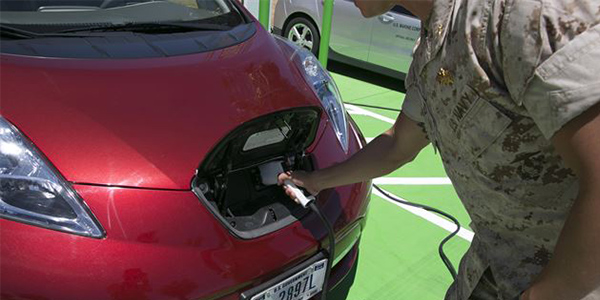By Hudson Sangree
California Gov. Gavin Newsom last week signed two dozen bills dealing with wildfire prevention and affecting the state’s electricity providers. Many of the bills codify recommendations from the governor’s wildfire “strike force” report released this spring.
“The report provided guidance on how the state can build a safe, reliable and affordable energy future,” Newsom’s office said in a news release after the signings Wednesday. (See Calif. Must Limit Wildfire Liability, Governor Says.)
The governor’s report recommended easing the strict liability that utilities face when their equipment sparks wildfires, but none of the bills signed by Newsom dealt with that politically unpopular idea. Instead, they addressed topics such as public safety power shutoffs during hot, windy days and the safety implications of the sale of investor-owned utility assets.
“Given the realities of climate change and extreme weather events, the work is not done, but these bills represent important steps forward on prevention, community resilience and utility oversight,” the governor said in his signing statement.
Among the bills that became law was SB 676, which seeks to ensure that adding millions of electric vehicles in coming years won’t overtax the grid and lead to greater need for fossil-fuel generation. It instructs the Public Utilities Commission to establish strategies to integrate EVs, including time-of-use rates that encourage charging during the “belly” of the state’s so-called duck curve, when there’s a glut of cheap solar power in the middle of the day. (See related story, EVs Could Soak Up Solar or Exacerbate ‘Duck Curve’.)
SB 676 was authored by State Sen. Steven Bradford (D), a former public affairs manager for Southern California Edison and member of the Energy, Utilities and Communication Committee. Bradford also authored SB 155, which will require the PUC to monitor the renewable portfolio standards of load-serving entities to make sure they’re meeting their goals under the state’s ambitious greenhouse gas reduction scheme. Last year’s SB 100 requires the state to rely on zero-carbon energy sources by 2045.
Another measure, SB 520, reworks the notion of the provider of last resort (POLR) in the face of the state’s fast-changing electricity landscape. Traditionally, California’s three big IOUs have filled that role. But with the rapid increase of community choice aggregators (CCAs), lawmakers decided the old rules needed updating. (See Calif. Lawmakers Reveal Growing Divisions over CCAs.) Authored by Sen. Bob Hertzberg (D), the law allows CCAs to be the POLRs in their service territory, contingent on approval by the PUC.
Under SB 550, by Sen. Jerry Hill, a San Francisco-area Democrat, the PUC must review the acquisition of an IOU’s assets based on safety criteria. It specifies the commission’s review would apply even if the sale is to a public entity, such as a city. (San Francisco has offered $2.5 billion for PG&E’s assets there.) Under current law, the PUC must evaluate the sale or merger of utility assets based primarily on the net benefit to ratepayers.
Addressing power shutoffs, SB 167, by Sen. Bill Dodd, a Democrat from the Napa Valley, requires IOUs to improve their legally mandated wildfire mitigation plans by lessening the impact of public safety power shutoffs on residents. PG&E has turned off power to tens of thousands of customers across Northern California in recent months to prevent wildfires, including in Dodd’s district.




